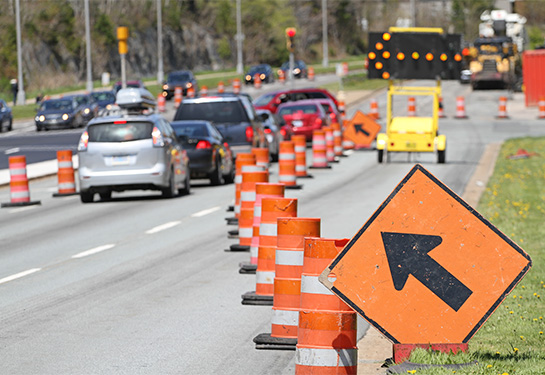Construction zones are danger zones: Tips to keep workers, drivers safe
You’ve likely driven through one — or more — of the many highway construction zones in the Sacramento area over the past few years. With so many roads getting an upgrade, experts say we need to take extra care to keep both drivers and construction workers safe. Speeding or distracted driving in a work zone can have serious consequences.
“The next time you see cones, flashing amber lights and Caltrans workers, think of the loved ones in your car, and the loved ones of the workers on the road,” said Jennifer Rubin, injury prevention specialist at UC Davis Health. “Slow down, pay attention and be prepared to move over.”
According to the National Work Zone Safety Information Clearinghouse, 108 work zone fatal crashes were reported in 2022 in California.
UC Davis Medical Center is a level 1 trauma center and a level 1 pediatric trauma center that cares for adults and children who have been injured in motor vehicle crashes.
What is a Work Zone?
A work zone is an area of a highway or roadway with construction, maintenance, or utility-work activities. A work zone is typically marked by signs, cones, barrels, channeling devices, barriers, pavement markings or work vehicle. It extends from the first warning sign or flashing lights on a vehicle to the "End of Road Work" sign or the last traffic control device. A work zone may be for short or long durations and may include stationary or moving activities.
What should you do when approaching a work zone?
Construction and maintenance activities close to the road involving workers and equipment can be very distracting.
You should always:
- Stay alert and be aware of your surroundings. Dedicate your full attention to the roadway.
- Be patient and pay close attention. Keep an eye out for signs (which may change from week to week) and work zone flaggers (those who are directing traffic).
- Avoid distractions. Avoid changing radio stations and using cellphones while driving in a work zone.
- Don’t speed. Speed is the No. 1 contributing factor in work zone crashes.
- Expect the unexpected. Keep an eye out for workers and their equipment.
- Merge early.
- Allow ample space between your vehicle and the car in front of you.
- Move over when you see flashing amber lights to allow an emergency vehicle, tow truck or Department of Transportation vehicle to pass. The law requires drivers to move over a lane, if safe to do so, when passing vehicles with flashing amber lights.
- Stay in your car and stay buckled up if your car stalls in or near a work zone.
What is the penalty for speeding in a work zone?
Fines are doubled in highway work zones. They can easily total $1,000 or more for drivers who speed, drive aggressively, text, or are otherwise distracted driving through a work zone.
Are work zone speed limits in effect even if no workers are present?
Yes. A work zone is an area where there could be uneven pavement, narrowed lanes or shoulders, and other changes to road conditions that drivers may not be expecting, regardless of whether there are workers present or not.




